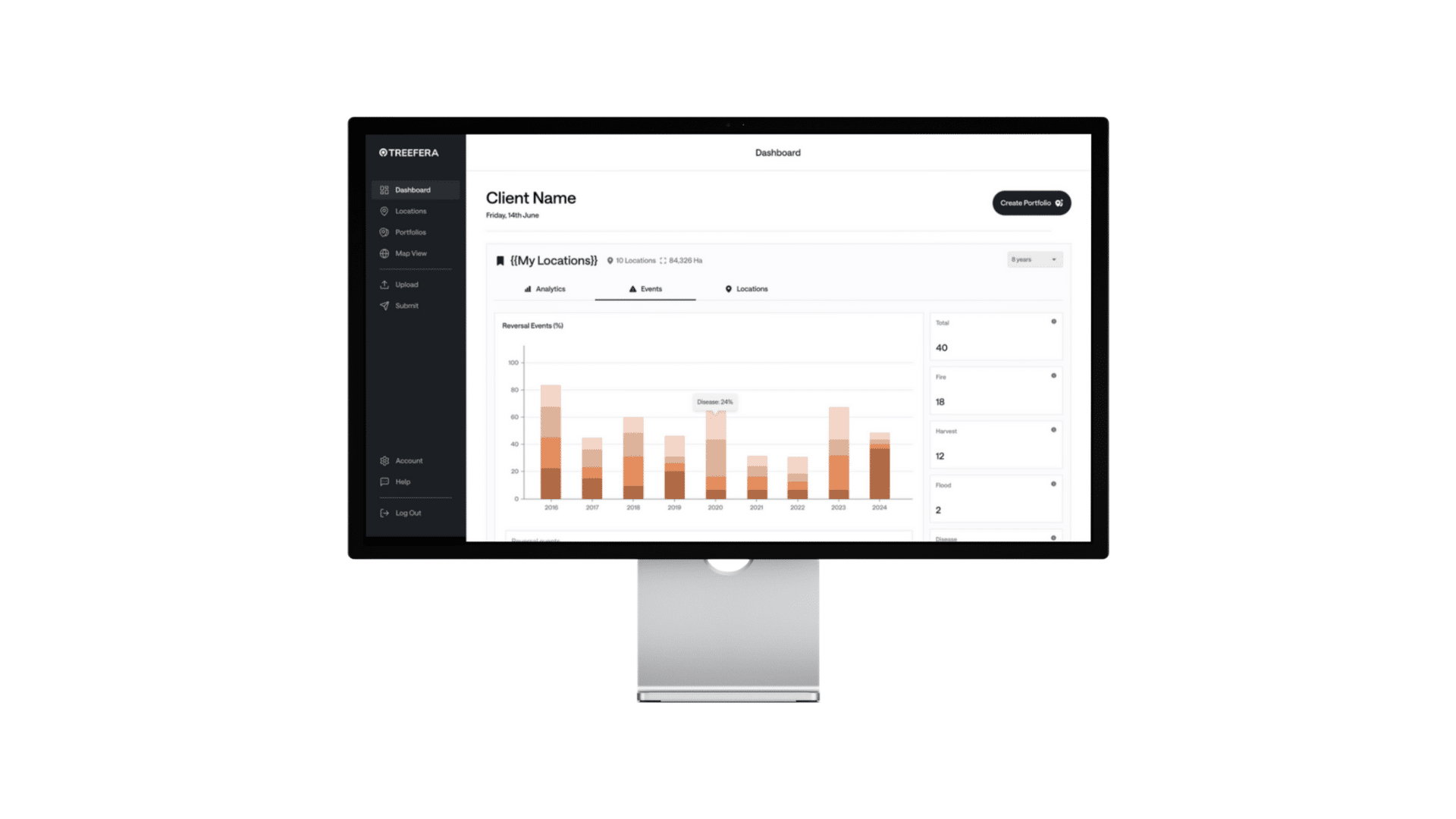Key Takeaways
- “You need to be able to answer where it’s come from, where it is today, who made it, and what’s in it,” said Treefera’s Simon Constance.
- Supply chains are evolving from basic tracking to full visibility of origin, production, and risk.
- Advances in satellite imagery and AI are reducing reliance on manual field surveys.
- Regenerative agriculture is becoming measurable and data-driven.
- Financial institutions are increasingly demanding verified productivity data from agricultural assets.
Simon Constance: Building Supply Chain Resilience with Treefera
We recently sat down with Simon Constance, Head of Partnerships at Treefera, an AI-enabled data fabric designed to de-risk and strengthen global commodity supply chains.
“We bring the same precision that financial markets demand into the world of commodities and carbon,” explained Simon Constance. “By combining satellite imagery, sensor data, and verified ground records through adaptive AI, we provide real-time, defensible insights that help companies anticipate disruption and reduce exposure to risk.”
Treefera’s technology supports applications across risk and compliance, portfolio management, sourcing resilience, and regenerative planning. With teams in Europe, Asia, and the U.S., the company’s independent and commodity-agnostic model positions it as a trusted data partner for enterprises navigating increasing environmental and geopolitical pressures.
The Evolution from Efficiency to Transparency
Reflecting on three decades in supply chain management, Simon Constance noted a major shift in priorities: “When I first started, all that mattered was that goods were at the port on time. Today, transparency and visibility define operational success.”
Companies now want to understand every link of their chain—where products originate, who processes them, and whether operations remain viable. This shift reflects growing regulatory, social, and financial expectations for verifiable sourcing data.
Why Origin Data Matters, According to Simon Constance
Using the cocoa trade as an example, Constance highlighted the challenges of limited visibility: “Historically, companies relied on brokers and on-ground staff for updates. There wasn’t a way of knowing, in near real-time, how crops were performing.”
That gap, he said, can directly affect profitability. “If you’re short 10% on your manufacturing run, you’re short on revenue.” He added that compliance requirements, such as EU deforestation regulations, make origin proof mandatory: “Without verified origin data, goods don’t cross borders—your supply and revenue lines stop.”
Treefera’s AI and Satellite Approach
Simon Constance described how remote sensing is replacing field audits: “Five years ago, people went into fields with string to measure plots. Today, satellites and AI deliver instant insights.” Treefera integrates diverse datasets into what Constance calls a “data fabric.” Users can visualize insights via Treefera’s application or integrate them directly into existing enterprise systems through APIs.
Simon Constance on the Shift to Proof-Based Regenerative Agriculture
The term “regenerative” has often been used loosely, but Simon Constance emphasized the importance of measurable outcomes: “There was a time when businesses could spend millions and show pictures of farmers online. Now, technology allows us to provide trustworthy data proving how programs are performing.”
Treefera’s clients increasingly tie investment to impact: “They want to understand if money is improving soil water retention or being used as promised. That’s how regenerative agriculture becomes scalable and financially sustainable.”


